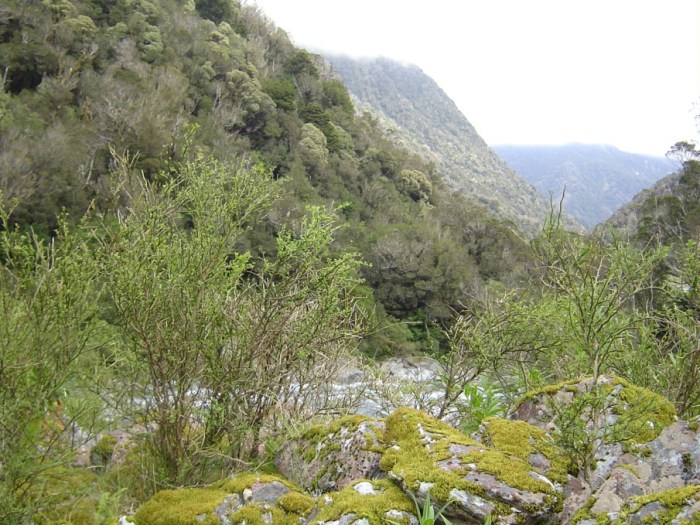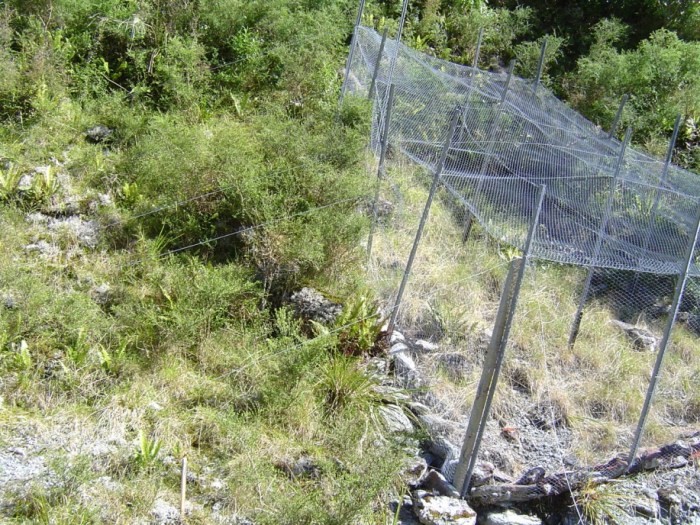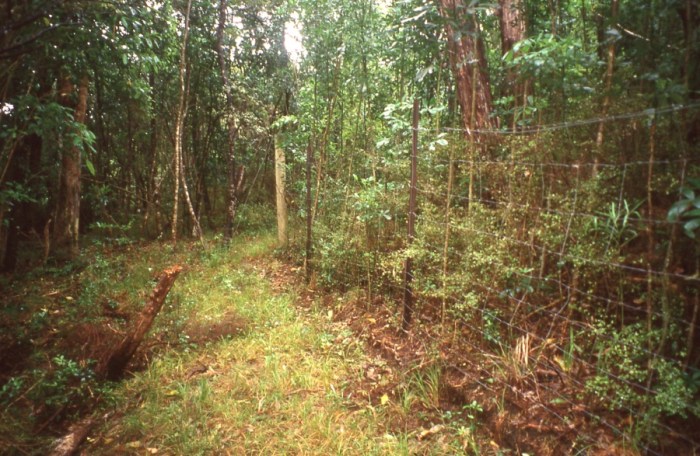 The Journal of Ecology editors are delighted to honour David Wardle in our continuing Eminent Ecologist series. David has put together a special Virtual Issue of some of his excellent contributions to the journal and has written a series of blog posts reflecting on his work. Read Part 1, Part 2 and Part 3 on the Journal of Ecology blog.
The Journal of Ecology editors are delighted to honour David Wardle in our continuing Eminent Ecologist series. David has put together a special Virtual Issue of some of his excellent contributions to the journal and has written a series of blog posts reflecting on his work. Read Part 1, Part 2 and Part 3 on the Journal of Ecology blog.
NITROGEN FIXERS AND INVASIVE MAMMALS IN NEW ZEALAND FORESTS
From the mid-1990s my research transitioned from focusing primarily on managed grasslands to primarily on natural forests. Some of the first forest work that I was involved with was in the Kokatahi valley in Westland, New Zealand, an area characterized by rugged mountains, high geological activity and an annual rainfall of 7000 mm, and which is readily accessible only by helicopter. When new surfaces are formed in this valley (as a result of geologic disturbance and erosion), they are frequently colonized by the nitrogen-fixing shrub Carmichaelia odorata. In the late 1990s, Peter Bellingham, Lars Walker and I spent several days in this valley, performing measurements on a 100 year chronosequence in which surfaces are colonized by C. odorata, and collecting large volumes of soil from this sequence which was then helicoptered out for glasshouse experiments. The data from this effort underpins my ninth chosen paper (Bellingham et al. 2001). At the time of our study, the idea that facilitation is really important in many natural ecosystems was just starting to gain traction (e.g., Callaway, 1995) and our paper highlighted the facilitative role that C. odorata had in impacting subsequent forest development on newly formed surfaces, through preferentially favoring growth of some canopy tree species over others.

Carmichaelia odorata in the Kokatahi Valley, NZ. Photo: D. Wardle
When we conducted that study, we also set up a removal experiment in the Kokatahi valley, where for each of 15 pairs of plots we left one plot intact and continually removed all C. odorata plants from the other. As might be expected in an area characterized by periodic heavy flooding and erosion, 8 pairs of plots were lost over time, but seven pairs still remained when we harvested them ten years later. We measured a range of aboveground and belowground properties in each plot at both the community and ecosystem level, and this work is reported in my tenth chosen paper (St. John et al. 2012). Because C. odorata is highly palatable and therefore removed by invasive non-native mammal species such hares, deer and chamois (abundant in much of Westland but not in the Kokatahi valley), our removal treatment was able to address the impacts that might occur through of C. odorata loss resulting from mammal invasion. The strong effects of C. odorata removal that we found on many variables support the view that the simultaneous gains of some organisms (e.g. invasive herbivorous mammals) and resultant losses of others (e.g. palatable N-fixing plants) can be a major transformer of many communities and ecosystems world-wide.

Fenced plot to exclude invasive Australian brush-tailed possums, Kokatahi Valley, NZ. Photo: D. Wardle
Although the Kokatahi valley has low abundances of ground-based invasive herbivores that prefer C. odorata, it supports very high densities of the invasive arboreal Australian brush-tailed possum that is also a selective forager. To observe the ecological impacts of these possums on plant successional development, we set up six exclosure plots, and six corresponding control plots, on newly formed bare land surfaces in 2002. These exclosures included fencing not only around the sides but also over the top to stop possums from climbing in, and which required very competent fencing contractors to install, given the challenges of constructing structures that are likely to persist in a very dynamic landscape (which they all did!). We then monitored these exclosures for 11 years, and the resulting data formed the basis of my eleventh chosen paper (Bellingham et al. 2016). A key finding is that possums removed small statured grasses and sedges in the first years of primary succession, which then promoted domination by shrubs including the nitrogen fixing C. odorata, with important follow-on consequences for soil fertility and the decomposer food web.

Fenced plot to exclude invasive deer, Woodhill Forest, NZ. Photo: D. Wardle
The impact of invasive mammals (both above and below ground) has been a long standing research interest of mine, and New Zealand is an ideal place to explore this topic because it lacks native mammals other than bats. New Zealand’s natural forests also have large numbers (probably hundreds) of intact ungulate exclusion plots, some of which have been in place for several decades, and which my colleagues and I utilized in some of my earliest forest research to explore below ground impacts of mammal invasions (e.g., Wardle et al. 2001). My twelfth chosen paper (Kardol et al. 2014), driven by my former postdoc Paul Kardol and also involving several New Zealand-based collaborators, took these ideas further to explore how invasive ungulates not only affect the soil but also how these soil changes in turn affect subsequent plant performance. To do this, we collected soil from exclosure and corresponding control plots in each of 27 locations in the northern half of New Zealand, and took each soil to a glasshouse and grew various plant species in it. We found that generally, plants grew less well when grown on soil outside the exclosures, and that this was due to ungulates affecting abiotic (and not biotic) soil properties, most likely through soil compaction. These studies, as well as many others, highlight that despite some recent commentaries suggesting otherwise, invasive organisms have serious and recurrent impacts on ecosystem functioning in many ecosystems worldwide that cannot be ignored (Simberloff et al. 2013).
In total, and as highlighted by most of the 12 papers I have chosen, the types of species that we have in any community is a major driver of its functioning, both aboveground and belowground. Over the past two decades of research and publication of hundreds of studies by many people, it is now highly apparent that any substantial change in community composition resulting through human activity, either through existing species being lost or new species entering, serves as a major route by which global change phenomena drives the functioning of ecosystems. But there are many exciting research challenges in this area that remain, for example understanding what happens in less-studied types of ecosystems (such as in the tropics to which I recently relocated), disentangling the reasons as to why species effects vary according to environmental context, and the extent to which ecosystem functioning is driven by the gains of some species and the losses of others.
David Wardle, Nanyang Technological University, Singapore
 You can read David’s 12 selected papers on the journal website: Eminent Ecologist 2018 Virtual Issue
You can read David’s 12 selected papers on the journal website: Eminent Ecologist 2018 Virtual Issue
Read Part 1, Part 2 and Part 3 on the Journal of Ecology blog.




Pingback: Eminent Ecologist 2018: David Wardle (part 1) | Journal of Ecology Blog
Pingback: Eminent Ecologist 2018: David Wardle (part 2) | Journal of Ecology Blog